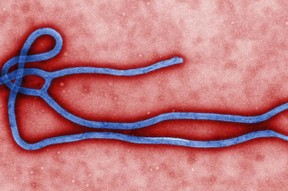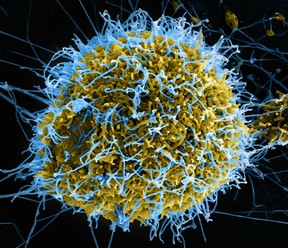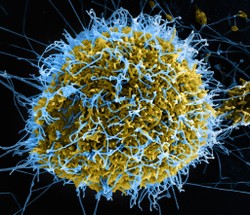So far, the only two cases of Ebola being contracted in the United States occurred when two nurses cared for a patient in Dallas. That patient later died. All other cases, so far, in the United States originated outside the country, most often in people coming from countries in West Africa.
Please note that the single patient who died, Thomas Eric Duncan, went to a hospital on September 25th, the day after he started running a fever. Duncan was sent home the same day. On September 28th, three days later, Duncan returned to the hospital when his fever did not break. It was not until September 30th that tests proved Duncan had the disease. Duncan was already at high risk of transmission when he checked into hospital. On October 8th, nine days after being diagnosed, Duncan died.
Note that Duncan was infectious from the time he began running a fever until the day he died. None of the forty-three other persons Duncan had contact with, other than the two nurses mentioned below, have contracted Ebola.
Protective gear was not worn by health workers until Duncan's diagnosis was made. This means Duncan was infectious and interacting with unprotected hospital personnel for two and a half days.
Nina Pham, one of the nurses who treated Duncan, tested positive for EVD* eleven days after Duncan was diagnosed. Amber Vinson, another nurse who cared for Duncan, was diagnosed with EVD sixteen days after Duncan was diagnosed.
Both nurses have now been declared virus free.
Dr. Martin Salia was admitted to the Nebraska Medical Center on the 15th of November 2014 and died on the 17th of November that same year. Hospital reports indicate that Dr. Salia was already in critical condition upon admission to the hospital.
This means, so far, that the mortality rate of EVD in the U.S. is near 20%, with eight survivors out of ten infections.



 There are many reasons, not the least of which is the relative "newness" of the disease. The viron that causes EVD is quite large at fourteen hundred nanometers in length and seventy to ninety nanometers in diameter. Compare this to seventy to eighty nanometers for the rhino-virus, (the common cold) and Ebola Virus is quite large.
There are many reasons, not the least of which is the relative "newness" of the disease. The viron that causes EVD is quite large at fourteen hundred nanometers in length and seventy to ninety nanometers in diameter. Compare this to seventy to eighty nanometers for the rhino-virus, (the common cold) and Ebola Virus is quite large. Until recently, detecting Ebola Viron particles has taken the better part of a day in a laboratory setting. This test is not designed to replace laboratory tests, but instead, allow health-care workers to implement treatment sooner while awaiting lab results.
Until recently, detecting Ebola Viron particles has taken the better part of a day in a laboratory setting. This test is not designed to replace laboratory tests, but instead, allow health-care workers to implement treatment sooner while awaiting lab results. Dr. Anthony Fauci, director of NIH's National Institute of Allergy and Infectious Diseases, announced human trials of a newly created vaccine for EVD. The vaccine is the outgrowth of research that had begun more than ten years ago for treatment against Ebola-Zaire. Initially the vaccine was developed for treating chimpanzees and proved quite effective.
Dr. Anthony Fauci, director of NIH's National Institute of Allergy and Infectious Diseases, announced human trials of a newly created vaccine for EVD. The vaccine is the outgrowth of research that had begun more than ten years ago for treatment against Ebola-Zaire. Initially the vaccine was developed for treating chimpanzees and proved quite effective.


 Crêpes and Crêpe Disheson 09/14/2016
Crêpes and Crêpe Disheson 09/14/2016
 About Me - Liam Beanon 11/28/2014
About Me - Liam Beanon 11/28/2014
 Buns and Rollson 09/04/2013
Buns and Rollson 09/04/2013


Comments